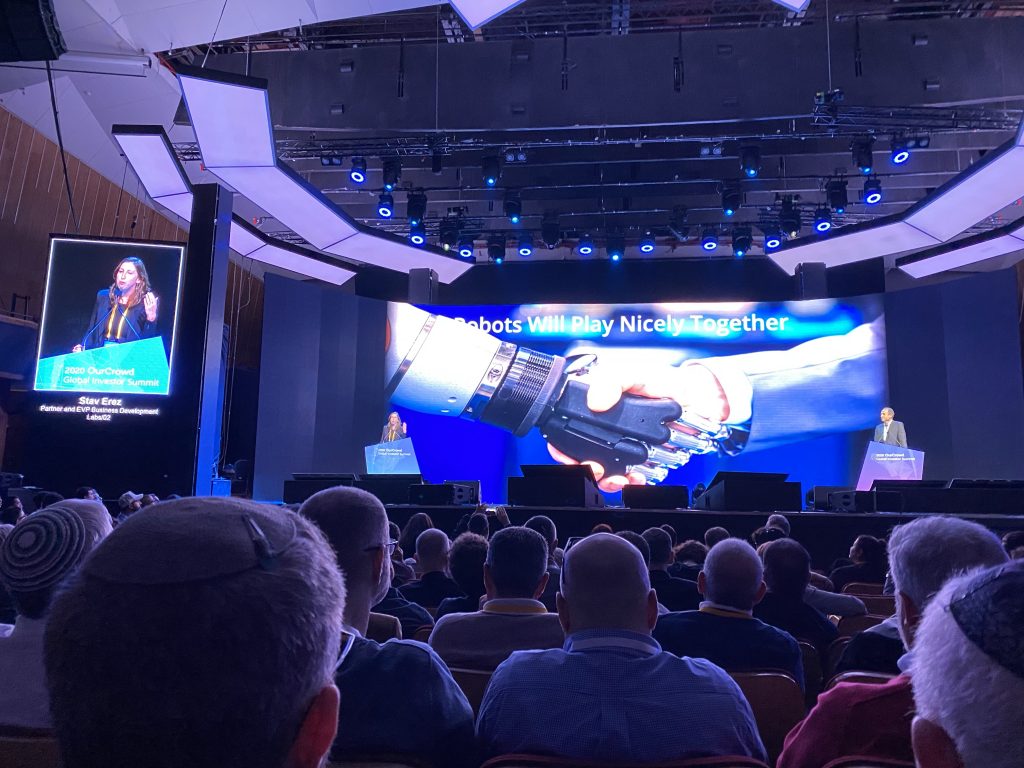One of the sessions I most look forward to each year at the Our Crowd Summit is the one where Stav Eres and Eli Nir present their tips on what the top trends in tech will be for the coming year. It’s a fast and furiously paced run through that highlights not only those emerging opportunities that get plenty of coverage in other forums but also always includes some lesser known spaces to watch. Here’s the summary of this year’s identified trends, and my thoughts on them.
Lab Food Gets Tasty
With the success of last years Beyond Meat IPO a frequent reference point through out the Summit it was no surprise that alternative food options was the first trend highlighted.
With lab grown food seen to deliver on numerous influence points – food surety, climate change mitigating and wellness – there’s no shortage of companies looking to follow in the successful footsteps of Beyond Meat.
The market has moved beyond (no pun intended) the original plant based meat alternatives to steaks grown in bioreactors and cellular aquaculture to shore up dwindling seafood supplies, but will ultimately be determined by the way our tastebuds vote.

Mind Over Matter: Our Brains Get Wired
Neural interfaces which allow our brains to interact with machines without the use of traditional components such as keyboards or touchscreens were the next identified trend.
Some high profile activities in this space have put it firmly onto the radar, one being Facebook’s Sept 19 acquisition of CTRL-Labs for reportedly just under $US1b. CTRL-Labs make a wristband capable of turning the brain’s electrical signals into computer actions, and what Facebook will do with the tech is yet to be revealed but inclusion into an AR glasses-style device is a top guess.
Elon Musk’s Neuralink is another firm active in this space, working on the premise that chips inserted close to a patients brain may benefit people with brain or spinal cord injuries. He’s on record saying he hopes to start human trials in 2020, so we’ll see what this year brings.
The Race to Autonomous Driving Becomes a Marathon
In previous years autonomous driving and the tech that fuels it has been a commonly identified hot trend. Its now become apparent that the safety gap between human powered and fully autonomous activity is larger than originally anticipated, and timelines have shifted accordingly.
There’s still significant opportunity though in tech that both progresses that goal, and in the meantime bridges the gap until full autonomy can be achieved.
RideVision, deemed the MobilEye for motorbikes, electric bikes and scooters gave an impressive demonstration of the way it’s tech that can be applied both to new builds and retrofitted, can significantly change the safety profile for the millions of people who take to the streets on these forms of transport.

AI Beats Moore’s Law
Moore’s Law, which presumes that computational power will double every two years while at the same time the cost of computing reduces has held fast for years. Doubling of processor power has become more difficult and more expensive in recent years, leading to the asking of the question as to whether Moore’s law remains possible.
AI computational power however tracked Moore’s law to 2012 but since then processing has exceeded Moore’s law pace. With the enormous compute power required to process the vast amounts of data that deep learning systems feed on, and the growth in the industries that require them – self driving cars for example – there’s no shortage of opportunities for companies that can continue to fuel this need.
If You’re Not Scared of the Dark You Should Be
The dark web is a dangerous place and home to drugs, human trafficking, fake ids, and hackers. Traditional search engines like Google can’t reach the dark web allowing its activities to remain hidden, but new search tools are shining a light into the darkness and exposing what lurks there.
These will be in high demand by enforcement agencies, but also likely to be of significant interest to those who dwell in the darkness as they find ways to stay hidden.

Productivity Leaps Ahead to Discovery
With the low code/no code market forecast to reach $US22b by 2024 everything that can be automated will be automated. Developers will be early adopters of the no-code development platforms which allow the creation of software using graphical interfaces and configuration rather than traditional code writing.
Security concerns about this approach remain, but with the demand for coding skills far outweighing the availability of trained coders, this is an area we can expect to see grow.
Computer Vision Drives Healthcare
High resolution images of pretty much anything you want to capture are now readily available, and the utilisation of AI to analyse those images is delivering advances in healthcare on a range of fronts.
The Olo desk top unit from SightDX delivers what Theranos promised, a device that produces in house lab quality results in minutes from just a few drops of blood.
Scopio‘s ability to take high resolution images of slides and then use its algorithms in their analysis is not only reducing the time taken to deliver results, with transportation times taken out of the mix but also allows expert collaboration and review.
It was definitely preaching to the converted when Eli spoke on the opportunity that the great quality vision that everyday laptops and iPads provide has created in making remote training easier than ever to deliver. This is an area that Icon Group has done a lot of work in, and we’re passionate about the benefits that remote training can deliver in opening up access to skills and supervised learning in parts of the world where it is much needed.

Robots Will Play Nicely Together
Building multiple robots for multiple tasks is easier than building one singular robot that can complete a complex task from start to finish. If those robots could collaborate, they could coordinate their actions and achieve that complex task together.
The technologies are being developed that will allow robots to share information with each other and make joint decisions, and their behaviours will rapidly become more sophisticated as they take on more ‘human’ style interactions.

Materials Become Material
Now when we’re considering the materials we’re using, our thinking needs to go far beyond just assessing whether or not they are fit for purpose.
For example advances in technology mean that construction materials now don’t just deliver and support the build structure, they can also play a role in supporting the activities to be conducted in that physical environment by minimising energy consumption – or actually contributing to energy generation.
Material suitability assessments also now include thinking about what impact has been created by the production of that material, is there an alternative with a lighter footprint, and what will happen when that product becomes obselete. Is it recyclable, and if not is there another option that is.
Companies that produce innovative materials have a great opportunity to capitalise on the increasing desire of corporations large and small to minimise their impact footprint, and those corporations have an increasing social obligation to their customers and employees to explore their options.
Schrodingers Catfight Over Quantum Supremacy
I have to admit I was lost with the Schrodinger reference (if you’re the same the explanation is here!) but the consensus across a number of forums I’ve been involved in recently is undoubtedly that the age of quantum computing becoming mainstream is getting very close.
At this stage advancements in quantum computing are still coming from the tech giants – it’s a very expensive field, and one where only a very low number of people have the skills and knowledge to work in the space, making them very expensive resources.
But cloud based quantum computers are opening up access, and more people are playing and learning in this space, and as always with different objectives and intentions. The big prediction is that it will take less than five years for quantum computers to crack encryption as we know it today, so opportunities exist not only in products that can do just that but in the development of new ways to protect our data to combat this.

As always, it will be fascinating to see how these predictions pan out.
Previous years are available here if you want to check out their strike rate!
